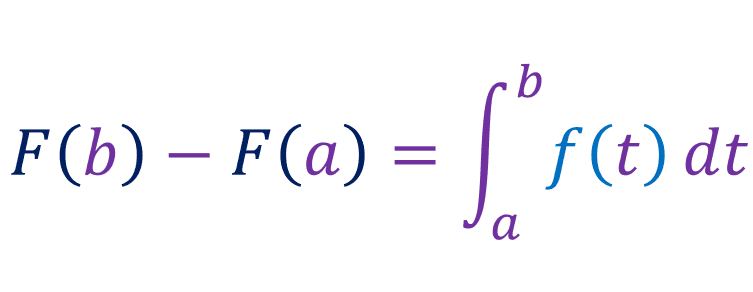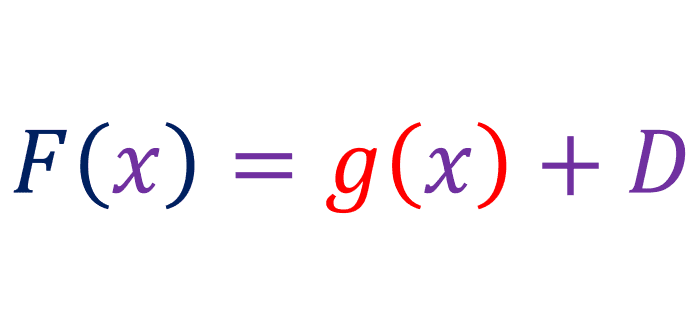The second fundamental theorem of calculus states that if f is continuous on [a, b], then:

where F(x) is the antiderivative of f. Lets say the function f is continous on [a, b], and lets say function g is defined by:

The variable x varies between a and b. Since g'(x) = f(x). We can say that g(x) is the antiderivative of f(x). The antiderivative of a function has an arbitrary constant. For example, the antiderivative of [x2] is [(x3/3) + C], where C is an arbitrary constant. This is not the case with g(x), since you can find the value of C by using g(a) = 0. For example if f(x) = [x2], and if a = 6, then g(6) = [(63/3) + C], this means that [C = -72].
F(x) is like g(x), but where the arbitrary constant is unknown, so:

Where D is unknown. Now lets evaluate F(b) - F(a):

If we expand g:

Since g(a) = 0:

This is the fundamental theorem of calculus, part 2.
The above proof assumes that f is continuous on the whole interval [a, b]. The proof below will assume that \(f\) is Riemann integrable on the interval \([a, b]\). Let \(F\) be an antiderivative \(f\) on \((a, b)\) such that \(F\) is continuous on \([a, b]\). Let there be numbers \(x_0, \ldots, x_n\) such that:
It follows that:
We can rewrite this as:
According to the mean value theorem, for each \(i\) there exists a \(c_i\) in \((x_{i-1}, x_i)\) such that:
Therefore:
We are describing the area of a rectangle, with the width times the height, and we are adding the areas together. As the size of the partitions get smaller and n increases, resulting in more partitions to cover the space, we get closer and closer to the actual area of the curve.
Neither F(b) nor F(a) is dependent on \(\Delta x_i\):
The expression on the right side of the equation defines the integral over \(f\) from \(a\) to \(b\):